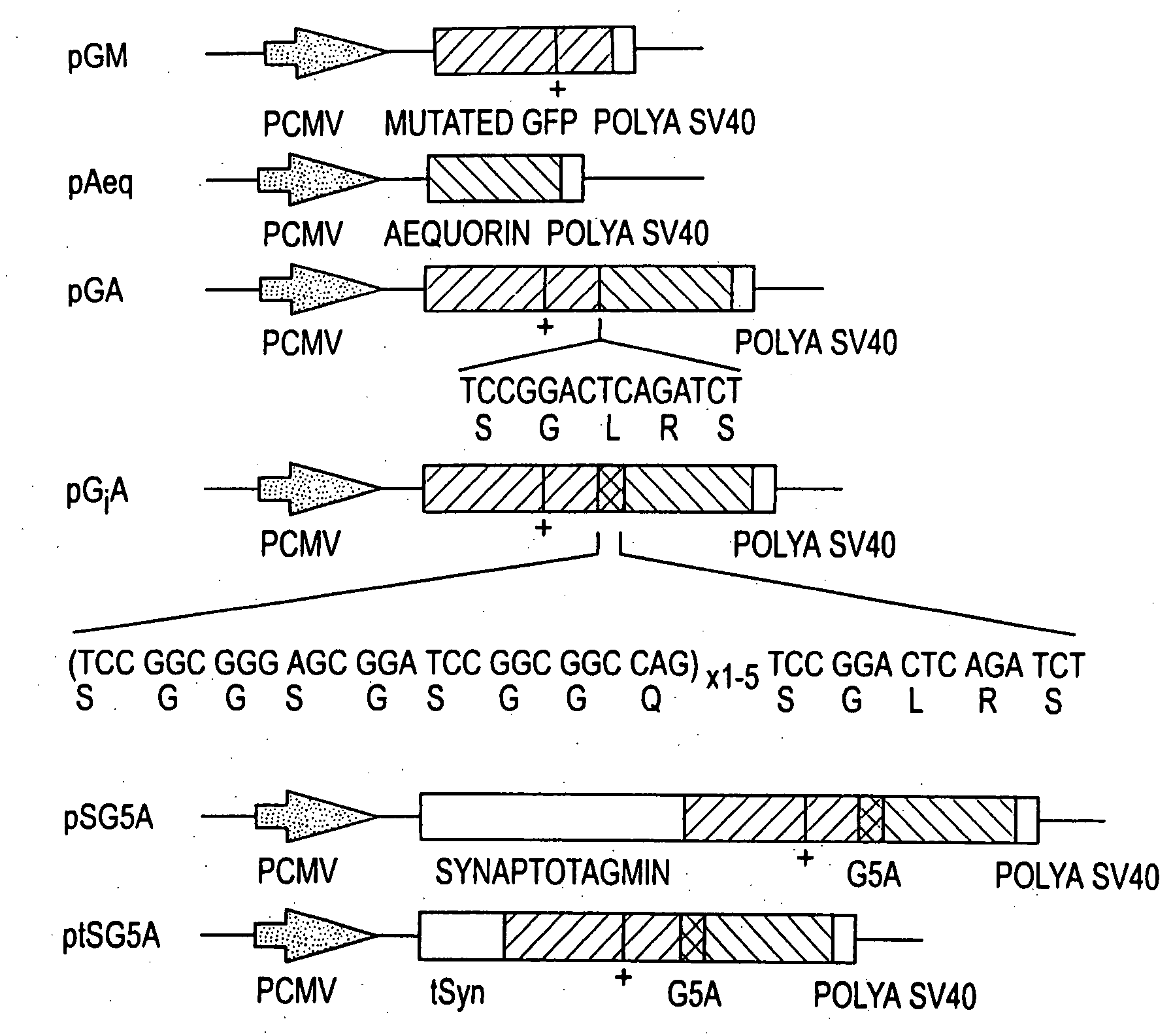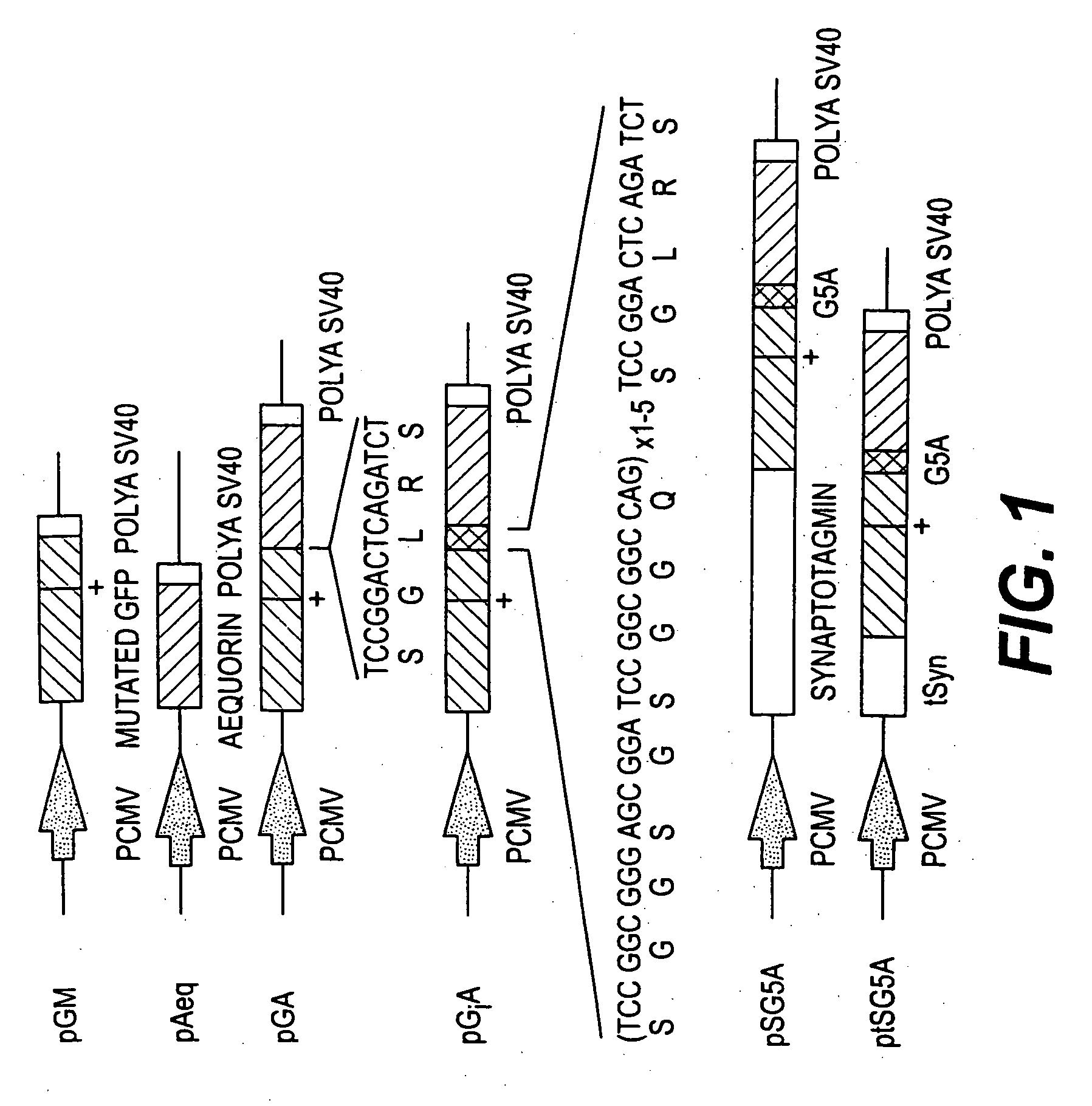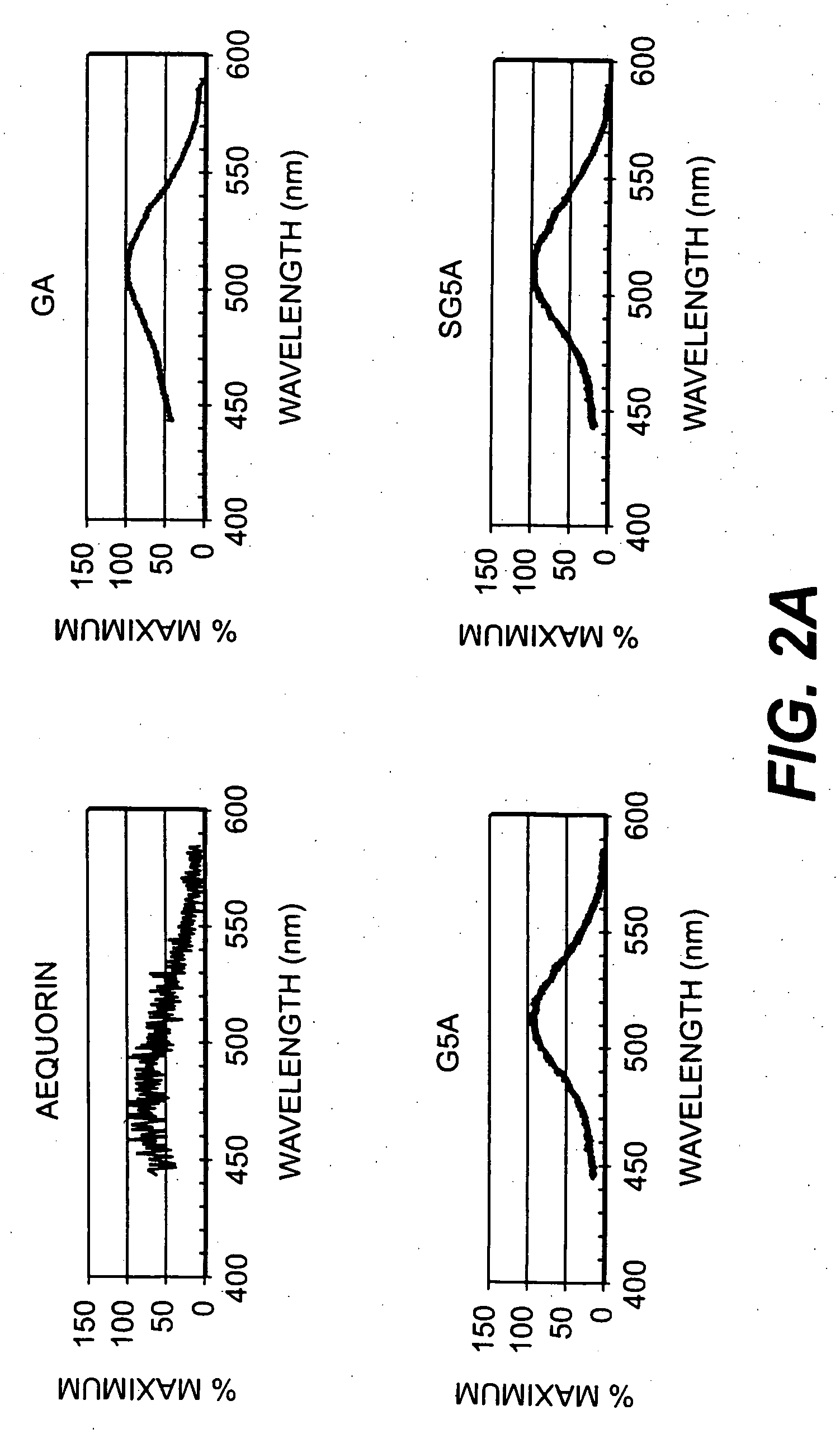Chimeric GFP-aequorin as bioluminescent Ca++ reporters at the single cell level
a reporter and chimeric technology, applied in the field of modified bioluminescent systems, can solve the problem that aequorin signals are very difficult to d
- Summary
- Abstract
- Description
- Claims
- Application Information
AI Technical Summary
Benefits of technology
Problems solved by technology
Method used
Image
Examples
example 1
Construction of GFP-aequorin Fusion Proteins
[0117]All the constructs were made in the pEGFP-Cl vector (Clontech). The EGFP gene is codon-optimized for maximal expression in mammalian cells. It also contains 2 mutations in the chromophore, F64L and S65T, which modify the excitation spectra and enhance fluorescence intensity (17). Valine 163 of the EGFP was also substituted by alanine, using single strand mutagenesis, to improve the proper folding of the protein and increase the fluorescence at 371C (18, 19). The aequorin coding sequence, a generous gift by M.-T. Nicolas, has been fused in frame at the 3′ end of the EGFP gene in the BgIII / SaII sites of pEGFP-Cl. Seven codons were modified for a better expression in mammalian cells by means of site-directed mutagenesis using PCR (polymerase chain reaction) with overlap extension. Then, complementary oligonucleotides, 5′-CCGGCGGGAGCGGATCCGGCGGCCAGT-3′ [SEQ ID NO: 23] and 5′-CCGGACTGGCCGCCGOATCCGCTCCCG-3′ [SEQ ID NO: 24] were inserted at...
example 2
[0119]Cell Culture and Transfection
[0120]Neuroblastoma cells (Neuro2A, mouse) were grown in Dulbecco's Eagle medium (Life Technologies—Gibco, UK) supplement with 10% (V / V) heat-treated foetal calf serum, 2 mm glutamine (Life Technologies—Gibco, UK) and 100 units streptomycin-penicillin (Life Technologies—Gibco, UK). The culture were incubated at 37° C. in a humidified atmosphere containing 8% CO2 and transiently transfected using either the CaPO4, technique or the FuGENE 6SM transfection reagent (Roche).
example 3
[0121]In vitro Ca++ Sensitive Chemiluminescence and CRET Activities
[0122]Cells were harvested 48 h after transfection in 250 gl of 10 mM β-mercaptoethanol, 4 mM EDTA, 5 μM coelenterazine in PBS at 4° C. during 2 to 4 hours. Cells were rinsed in 1 mM EDTA in PBS and harvested in 400 μl of hypo-osmotic buffer (20 mM Tris-HCl pH 7.5 / 5 mM EDTA / 5 mM β-mercaptoethanol with a protease inhibitor cock-ail according to the manufacturer, Roche), for 30 min. to 1 h. at 4° C. The cell membranes were broken by passing through a 30 gauge needle and the cellular extract was obtained after microcentrifugation at 13000 rpm for 1 h at 40° C. The supernatant was harvested for all constructions but SG5A for which the membrane pellet was further resuspended Calcium sensitivity chemiluminescent activity was measured in a luminometer (Lumat LB95501 E&EG Berthold). Aliquots (10 μl) were placed in sample tube (with 90 μl of 10 mM Tris-HCl pH 7.5) in the luminometer and the light intensity expressed in relati...
PUM
| Property | Measurement | Unit |
|---|---|---|
| transfer of energy | aaaaa | aaaaa |
| chemiluminescence | aaaaa | aaaaa |
| bioluminescent system | aaaaa | aaaaa |
Abstract
Description
Claims
Application Information
 Login to View More
Login to View More - R&D
- Intellectual Property
- Life Sciences
- Materials
- Tech Scout
- Unparalleled Data Quality
- Higher Quality Content
- 60% Fewer Hallucinations
Browse by: Latest US Patents, China's latest patents, Technical Efficacy Thesaurus, Application Domain, Technology Topic, Popular Technical Reports.
© 2025 PatSnap. All rights reserved.Legal|Privacy policy|Modern Slavery Act Transparency Statement|Sitemap|About US| Contact US: help@patsnap.com



